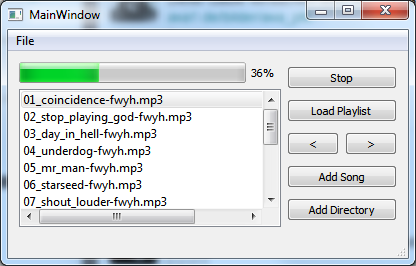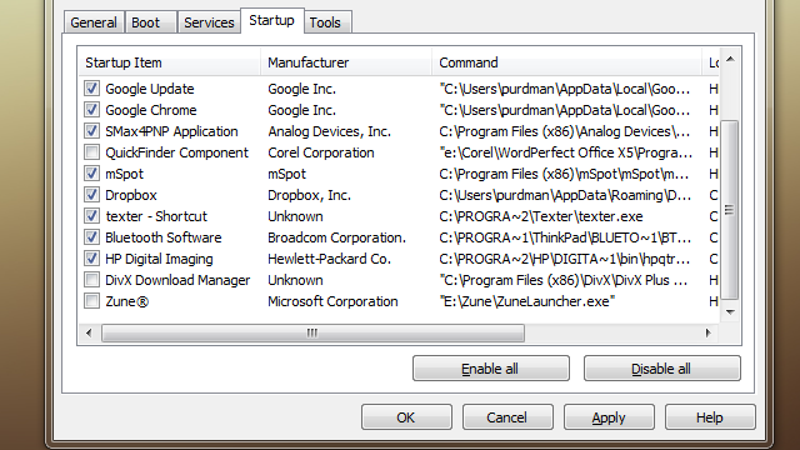Player Mfc Application
This is the only official MFC APP for mobile users. With My Family Cinema, access you content quickly and easily! Download and install the APP, click on the cloud icon on the home page and then go to the 'My Cloud' on the plus symbol (+). Finally, go to 'Import from the Internet' where you can either paste the link to the cloud or visit our forum to read other users experience. This application is a VisualC/MFC application for Windows, and is designed as a lightweight 'shell' host for several different plug-in types, such as file format, color space, and image processors. There are currently 23 plugins included with the project, with many more planned (and hopefully created by others too! Video Player Mfc Application Free Downloads - 2000 Shareware periodically updates software information and pricing of Video Player Mfc Application from the publisher, so some information may be slightly out-of-date. You should confirm all information before relying on it.
- Video Player Mfc Application
- Video Player Mfc Application Download
- Video Player Mfc Application
- Everfocus Player Mfc Application
- Self Player Mfc Application
Video Player Mfc Application
- Media Player free download for Windows & Mac. The Video Player download is free (it is free as VLC media player) and it is compatible with all popular audio and video formats such as DivX, Flv, Xvid, WMV, Mkv, Ogg, MP3, MP4, Blue Ray and many others. VPlayer is a powerful player, quality and easy to use for both beginners and experienced users.
- Information about VideoPlayer MFC Application. VideoPlayer MFC Application is mostly used to open: Video files by 22% of users; VideoPlayer MFC Application is usually found in following folders.

To use the functionality of Windows Media Player 9 Series or later in a Visual Basic .NET application, first add the component to a form as described in Using the Windows Media Player Control with Microsoft Visual Studio
This section describes how to create an application that plays video and has custom play and stop buttons.
Add the Video Window
Add the Windows Media Player control to a form. Resize the control, and then place it where you want the video window to appear.
Select the Windows Media Player control, then change the uiMode property to 'none'. This setting hides the UI controls. When the user plays a video, it will appear in the window. For audio-only content, a visualization will appear.
Add Two Buttons and Adjust the Form
Now add two buttons to the form. Select the first button and change the Text property to 'Play'. Select the second button and change its Text property to 'Stop'.
Add the Play Code
Video Player Mfc Application Download
Double-click the Play button to reveal the Code window. The following code is displayed:
Add this line to the subroutine:
In the preceding code example, 'axWindowsMediaPlayer1' is the default name of the Windows Media Player control and 'c:mediafile.wmv' is a placeholder for the name of the media you want to play.
Video Player Mfc Application
If you have added the digital media content from the Windows Media Player SDK to the library in Windows Media Player, you can use this code instead:
Because the autoStart property is true by default, Windows Media Player will start playing when you set the currentPlaylist or URL property.
Add the Stop Code
Double-click the Stop button to reveal the Code window. The following code is displayed:

Add this line to the subroutine:
Note
The managed-code wrapper for the Windows Media Player control exposes the Controls object as Ctlcontrols to avoid collision with the Controls property inherited from System.Windows.Forms.Control.
Add Error-handling
The Windows Media Player control does not raise an exception when it encounters an error such as an invalid URL. Instead, the control signals an event. Your application should handle error events sent by the Player.

To create an event handler, open the code window for your form class. From the drop-down list at the top of the window, select the Windows Media Player control. A list of events appears in the drop-down list to the right. From that list, select MediaError. The following code is displayed:
Everfocus Player Mfc Application
The following code could be inserted in the subroutine to provide minimal error-handling capability. Note that information about the error can be retrieved from the _WMPOCXEvents_MediaErrorEvent argument.